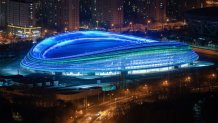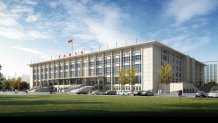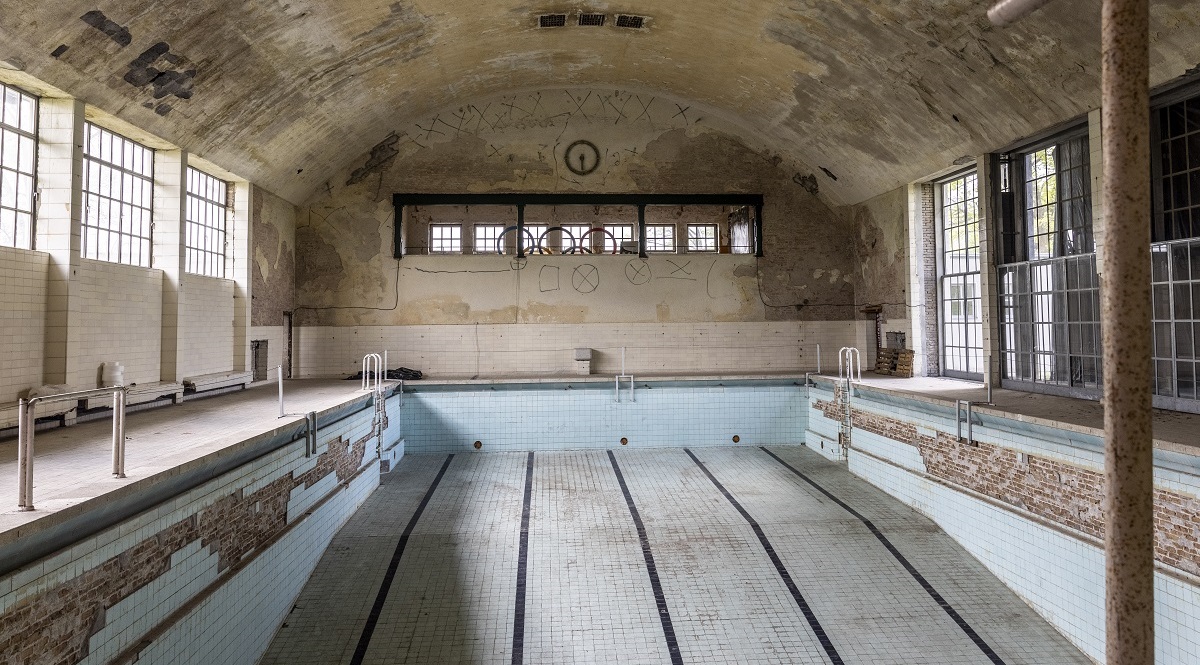More than 2,800 Olympians from around the world filled Beijing’s “Bird’s Nest” for the opening ceremony, officially making China’s capital the first city to host both the Winter and Summer Olympics.
After the pomp and circumstance for opening and closing ceremonies in past Games, many Olympic venues remain untouched and abandoned. Beijing, however, intends to make use of their venues for many years to come.
Five of the seven venues Beijing used in the 2008 Summer Games were repurposed for use in the 2022 Winter Games. The only new venues this time around are the “National Speed Skating Oval” and the “Big Air Shougang.”
2022 Winter Olypmics
Get top local stories in Southern California delivered to you every morning. >Sign up for NBC LA's News Headlines newsletter.
Here’s a look at the 2022 Winter Olympic venues and what will happen to them when the Games have ended.
Beijing’s National Stadium – The “Bird’s Nest”

Beijing’s National Stadium held the Opening Ceremony and is also set to hold the Closing Ceremony on Feb. 20th. No sporting events were held in the venue for the Winter Olympics.
In 2008, the site held the same ceremonies, but were also used to host competitions for track and field events and the men's soccer gold medal match between Argentina and Nigeria.
After the Games, the site will be used for more sports competitions and entertainment events.
National Aquatics Center - The "Water Cube" or "Ice Cube"

In 2022, the National Aquatics Center served as the site for Olympic curling and will double as the same for wheelchair curling in the Paralympics.
The Aquatics Center was used for swimming, diving, synchronized swimming, and polo for both the Olympic and Paralympic Games in the 2008 Summer Games.
Officials say the center will be a multipurpose sports venue after the Closing ceremony. The venue will be used for ice sports such as curling and ice skating in the winter, but will also be used for swimming, diving, and as a leisure water park in the summer.
National Speed Skating Oval

The National Speed Skating Oval is the only stadium that was built from the ground for the 2022 Winter Olympics. Nicknamed the “Ice Ribbon,” the stadium will host all speed skating competitions.
The 12-000 seat venue was designed by American architect Populous, who has also designed several other Olympic venues including the Fisht Stadium at the 2014 Sochi Olympics and the stadium that held both the Opening and Closing ceremonies for the 2012 London Games.
“Much of the inspiration for the conceptual design of the ‘Ice Ribbon’ came from a traditional ice game played in old Beijing which involved a high-speed spinning ice top,” the company said in a release.
The design also incorporated the ribbon-like grooves speed skaters leave in ice.
After the Games, officials said the venue will be used for civic activities, ice hockey, figure skating, and other ice-skating events.
Big Air Shougang

Beijing’s former Shougang Group steel mill was repurposed into the world’s first permanent big air venue before the start of the 2022 Winter Olympics.
The site, which once darkened Beijing’s skyline with pollution for years, was closed before the city hosted the Games in 2008 as officials sought to green up its image.
As some of the rusty structures remain, including several 200-foot smokestack, the abandoned steel mill was reimagined with beautiful greenery, lawns, and ponds. One of the blast furnaces was also revamped into house shops, commercial offices, and a museum, while the site’s grassy lawns set the stage for summertime dance classes.
When the Winter Games are over, architects announced plans to transform one of the massive cooling towers into a wedding venue. Officials said the site will also be used for athletic training, sports, and civic and cultural events.
National Indoor Stadium

The National Indoor Stadium is the 2022 site for men’s ice hockey, including ice sled hockey for the Paralympics.
In 2008, the venue was used for gymnastics rhythmic, trampoline, handball, and wheelchair basketball competitions.
When the 2022 Winter Olympics have ended, the National Indoor stadium will be used for exhibitions, singing and dancing competitions, and entertainment shows.
Wukesong Sports Centre

The Wukesong Sports Centre hosted women’s ice hockey in the 2022 Winter Olympics and basketball in the 2008 Summer Olympics.
Similar to the National Indoor Stadium, the Wukesong Sports Centre will hold exhibitions, singing and dancing competitions, and entertainment events.
Capital Indoor Stadium

In the 2008 Beijing Summer Olympics, only volleyball competitions were held in the Capital Indoor Stadium. During the 2022 Winter Games, the venue hosted several sporting competitions including short track speed skating and figure skating.
The venue will be used as a mixed-used venue to hold other sporting competitions, as well as other culture- and entertainment-related happenings.



